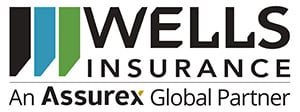Managing Specialty Drug Costs While Protecting Employee Access

Prescription drug costs continue to rise, and one of the most significant drivers is the rapid growth of specialty medications. These drugs are often life-changing for patients managing complex conditions such as cancer, autoimmune disorders, or rare diseases. They also carry an extraordinary price tag. In fact, specialty drugs now account for more than half of all prescription drug spending in the United States, despite being used by a relatively small percentage of the population.
For employers, this creates a challenging balance. How do you manage rising costs without limiting access to critical treatments for employees and their families? At Wells Insurance, we help businesses navigate this landscape with strategies that control spending while ensuring employees receive the care they need.
The Challenge of Specialty Drug Costs
Specialty medications often require special handling, monitoring, and distribution. This makes them more expensive than traditional drugs. Employers may see a few claims account for a disproportionate share of total pharmacy spending. Without careful management, this can quickly strain budgets and increase employee out-of-pocket costs.
Strategies for Employers
1. Optimize Your Formulary
A well-structured formulary can help balance cost and access. Employers should work with advisors and pharmacy benefit managers (PBMs) to:
-
Encourage the use of generics or biosimilars when clinically appropriate
-
Create tiered cost-sharing that promotes value-based choices
-
Review coverage for high-cost drugs and align it with clinical guidelines
2. Leverage Biosimilars
As more biologic drugs face competition from biosimilars, employers have an opportunity to reduce costs significantly. Biosimilars are safe, effective alternatives that often come at a lower cost. Encouraging their use can deliver savings for both the company and employees.
3. Increase Transparency with PBMs
PBM contracts are complex and can hide markups or rebates that do not benefit the employer or employee. Employers should negotiate for greater visibility into drug pricing, rebate structures, and dispensing fees. Transparent contracts help ensure that savings flow directly to the plan and its members.
4. Protect Employees from High Out-of-Pocket Costs
Even with insurance, employees may face coinsurance rates that make specialty medications unaffordable. Employers can:
-
Implement caps on out-of-pocket costs for specialty drugs
-
Provide access to manufacturer assistance programs
-
Explore carve-out programs or specialty drug management vendors that focus on affordability
5. Streamline Prior Authorization
Prior authorization is necessary for many specialty drugs, but it can create frustrating delays for employees. Employers should review their policies and work with PBMs to simplify the process wherever possible, ensuring employees get timely access to needed medications.
The Wells Insurance Approach
Managing specialty drug costs requires a proactive, informed strategy. At Wells Insurance, we partner with employers to:
-
Analyze pharmacy spend and identify high-cost drivers
-
Evaluate formulary design for cost-saving opportunities
-
Negotiate PBM contracts with a focus on transparency
-
Support employee education so members understand how to access their medications affordably
Final Thoughts
Specialty drugs are not going away, and their costs will continue to rise. Employers who act now to manage these expenses while protecting employee access will be better positioned to control budgets and retain talent.
If your business is concerned about the impact of specialty drug costs, our Employee Benefits team can help you develop a strategy that balances financial responsibility with compassionate employee care.
Visit our Employee Benefits page to learn more and connect with our team today.


